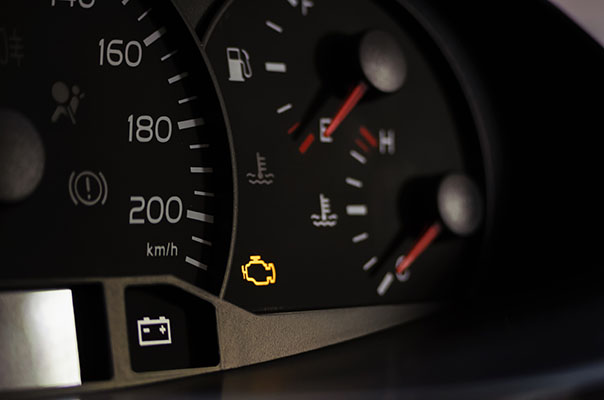
Your vehicle's dashboard is equipped with an array of warning lights designed to communicate important information about the car's status and potential issues. While the check engine light is commonly known (and feared), there are several other crucial dashboard lights that you should be aware of. Furthermore, some of them are even more worrisome than the check engine light.
Battery Warning Light
The battery warning light typically appears as a battery icon and indicates a problem with the vehicle's charging system. When this light illuminates, it signifies that the battery is not charging correctly, which could be due to a faulty alternator, damaged serpentine belt, or corroded battery terminals. If ignored, this can lead to a drained battery, leaving you stranded on the road.
Action to Take: Schedule an inspection with a qualified mechanic to diagnose and address the issue promptly.
Long-term Solution: After the battery has been changed, regularly check and service it to catch signs of issues on time.
Brake System Warning Light
The brake system warning light, often depicted as an exclamation mark within a circle, indicates a potential problem with the braking system. It can be triggered by issues such as low brake fluid levels, worn brake pads, or malfunctioning ABS (Anti-lock Braking System). Ignoring this light can compromise your vehicle's braking performance and safety.
Action to Take: Avoid driving the vehicle and seek immediate brake system inspection and repair.
Long-term Solution: Have a routine and strict shop visit schedule for brake inspections and maintenance
Tire Pressure Monitoring System (TPMS) Light
The TPMS light looks like an exclamation mark inside a flat tire and indicates that one or more tires have low pressure. Low tire pressure can lead to reduced fuel efficiency, uneven tire wear, and compromised handling. Ignoring this light can increase the risk of tire blowouts and accidents.
Action to Take: Check tire pressures and inflate them to the recommended levels. If the light persists, have the tires inspected for leaks or damage?
Oil Pressure Warning Light
The oil pressure warning light appears as an oil can or oil droplet and signifies a drop in engine oil pressure. Low oil pressure can result from low oil levels, a faulty oil pump, or engine oil leaks. Continued driving with low oil pressure can cause severe engine damage.
Action to Take: Stop the vehicle immediately and check the engine oil level. If it's low, add oil as needed. If the light remains on, tow the vehicle to a mechanic for inspection and repair.
Long-term Solution: Keep all systems related or connected to the oil maintained and tend to them at regular intervals.
Airbag Warning Light
The airbag warning light looks like an airbag deploying and indicates a problem with the vehicle's airbag system. It could signify a faulty airbag sensor, module, or wiring. Ignoring this light can result in the non-deployment of airbags during a collision.
Action to Take: Have the airbag system inspected and repaired by a professional to ensure its functionality in case of an accident.
What is the best thing you can do when your dashboard lights up?
The answer is simple, visit us at Guthrie's Auto Service and we will take care of everything! From your dashboard to the underside of your car, there is nothing we can't do!